What you can do is to use a CSS linear-gradient() for the background of your range element. The gradient will look like this:
linear-gradient(90deg, #4CAF50 ${percentage}%, transparent ${percentage}%)
Where percentage is the abrupt transition point from your color green to transparent. To calculate this percentage, some math is required: you will want to calculate the relative value of the input element to its minimum and maximum values. This can be computed as such:
const percentage = (e.target.value - slider.min) / (slider.max - slider.min) * 100;
See proof-of-concept below:
var slider = document.getElementById("myRange");
var output = document.getElementById("demo");
output.innerHTML = slider.value;
function updateGradient(rangeValue) {
const percentage = (rangeValue - slider.min) / (slider.max - slider.min) * 100;
slider.style.backgroundImage = `linear-gradient(90deg, #4CAF50 ${percentage}%, transparent ${percentage}%)`;
}
// Update gradient onload
updateGradient(slider.value);
// Update gradient oninput
slider.addEventListener('input', (e) => {
output.innerHTML = e.target.value;
updateGradient(e.target.value);
});
.slider {
-webkit-appearance: none;
width: 100%;
height: 15px;
border-radius: 5px;
background: #d3d3d3;
outline: none;
opacity: 0.7;
-webkit-transition: .2s;
transition: opacity .2s;
}
.slider:hover {
opacity: 1;
}
.slider::-webkit-slider-thumb {
-webkit-appearance: none;
appearance: none;
width: 25px;
height: 25px;
border-radius: 50%;
background: #4CAF50;
cursor: pointer;
}
.slider::-moz-range-thumb {
width: 25px;
height: 25px;
border-radius: 50%;
background: #4CAF50;
cursor: pointer;
}
<script src="https://cdnjs.cloudflare.com/ajax/libs/jquery/3.3.1/jquery.min.js"></script>
<div class="slidecontainer">
<input type="range" min="1" max="5" value="50" class="slider" id="myRange">
<p>Value: <span id="demo"></span></p>
</div>
Even better: Use CSS custom properties / variables
Even better: you don't have to hardcode the color value in your JS, if you just use CSS variables/custom properties. In this case, we simply pass the calculated percentage as a string to the --percentage custom property:
background-image: linear-gradient(90deg, #4CAF50 var(--percentage), transparent var(--percentage));
Then, in your JS, it is as simply as doing this:
const percentage = (rangeValue - slider.min) / (slider.max - slider.min) * 100;
slider.style.setProperty('--percentage', percentage + '%');
See example below:
var slider = document.getElementById("myRange");
var output = document.getElementById("demo");
output.innerHTML = slider.value;
function updateGradient(rangeValue) {
const percentage = (rangeValue - slider.min) / (slider.max - slider.min) * 100;
slider.style.setProperty('--percentage', percentage + '%');
}
// Update gradient onload
updateGradient(slider.value);
// Update gradient oninput
slider.addEventListener('input', (e) => {
output.innerHTML = e.target.value;
updateGradient(e.target.value);
});
.slider {
-webkit-appearance: none;
width: 100%;
height: 15px;
border-radius: 5px;
background-color: #d3d3d3;
background-image: linear-gradient(90deg, #4CAF50 var(--percentage), transparent var(--percentage));
outline: none;
opacity: 0.7;
-webkit-transition: .2s;
transition: opacity .2s;
}
.slider:hover {
opacity: 1;
}
.slider::-webkit-slider-thumb {
-webkit-appearance: none;
appearance: none;
width: 25px;
height: 25px;
border-radius: 50%;
background: #4CAF50;
cursor: pointer;
}
.slider::-moz-range-thumb {
width: 25px;
height: 25px;
border-radius: 50%;
background: #4CAF50;
cursor: pointer;
}
<script src="https://cdnjs.cloudflare.com/ajax/libs/jquery/3.3.1/jquery.min.js"></script>
<div class="slidecontainer">
<input type="range" min="1" max="5" value="50" class="slider" id="myRange">
<p>Value: <span id="demo"></span></p>
</div>
